S. H. Cotugno is a queer and mixed-race Victorian horror nerd born and raised in
Los Angeles, California. They are a director, writer, and storyboard artist in the
animation industry and have previously worked on projects such as Gravity Falls,
The Owl House, and Star vs. the Forces of Evil. The Glass Scientists will be their first
published graphic novel. You can see more of their work by following them on Twitter, Instagram, and TikTok (@arythusa).
I had the opportunity to interview S. H., which you can read below.
First of all, welcome to Geeks OUT! Could you tell us a little about yourself?
Thank you so much for inviting me! I’m an animation director and comics creator who has worked on shows such as The Owl House, Gravity Falls, and Star vs. the Forces of Evil. My debut graphic novel series The Glass Scientists will be published by Penguin Random House in a three-volume series starting October 2023.
What can you tell us about your latest project, The Glass Scientists: Volume One? What was the inspiration for this story?
The Glass Scientists is a reimagining of classic gothic science fiction set in a world of bubbling potions and misunderstood monsters. It follows the story of Dr. Henry Jekyll as he works to create a safe haven for mad scientists in the heart of London, where they can defy the laws of nature in peace. But everything changes when a mysterious stranger arrives, shattering all of Jekyll’s carefully laid plans and threatening to expose his darkest secret.
I have been obsessed with the story of Dr. Jekyll and Mr. Hyde since I was in high school. As a mixed-race, bisexual, and nonbinary person, I’ve always been drawn to stories about characters caught between two worlds. I can’t think of a character who embodies that experience more than Dr. Jekyll, a man so desperate to fit himself into the boxes society laid out for him that he literally splits his soul in two. Like, same, dude.
As a creative, what drew you to the art of storytelling, specifically within the comics/ graphic novel medium?
I came to comics through anime! In middle school, I needed to know what was going to happen next to my favorite Yu-Gi-Oh! character, Yami Bakura, so I started reading the imported manga from my local Japanese bookstore. (I couldn’t read the words, but I could glean the general gist of the story from staring longingly at his beautiful, evil face.)
But I didn’t start making my own comics until I embarked on my first full-time job as a storyboard artist on Gravity Falls. Gravity was a wonderful experience, but I missed getting to tell my own stories, like I had done while making student films. It seemed impossible to make my own animated show (having now developed four shows, can confirm: yeah, it’s super hard!). But it seemed slightly-less-impossible to create my own comic, so I decided to take the plunge.
In addition to being a graphic novelist, you are also known for your work in animation, most recently working on The Owl House. As a fan of the show myself, I would love to hear more about your experience working for the show if you’re interesting in sharing them?
The Owl House was such an extraordinary show to work on! I learned a ton from the incredibly talented and hardworking crew Dana assembled, especially my fellow directors Stu Livingston and Aminder Dhaliwal. Now that the show has finished airing, it’s been amazing to see how much they’ve accomplished, especially in the realm of LGBTQ+ representation. It takes an incredible amount of courage, perseverance, and downright stubbornness to get an honest-to-God gay kiss into an American animated TV show, but hopefully their hard work will open the gates for the queer creators who follow after them.
How would you describe your creative process?
For me, storytelling is a testing ground for reality, a place where I can play around with different identities and viewpoints before I’m ready to claim them for myself.
It took me a long time to come out as bisexual–and even longer to come out as nonbinary–in part because I was always questioning my own thoughts and feelings. I’d think: “You’re not gay, stop obsessing over yourself and focus on something that really matters,” or: “You’re not really trans, you’re just overthinking things, as usual.”
But in fiction, I didn’t have to interrogate every moment of my life leading up to that point. I could explore the queer relationship between Jekyll and Lanyon (a big focus of volumes two and three) and the backstory to my transmasc werewolf character, Jasper, just because I felt like it. And I felt like it because, for all my second-guessing, some quiet, authentic part of me knew what I wanted all along.
I guess that means my creative process is “listen to your heart??” That’s so embarrassing to say out loud! Oh well, I guess I’d just better own it . . .
For those curious about the process behind a graphic novel, how would you describe the process?
My process might be a bit unusual because The Glass Scientists was originally posted as a weekly webcomic over the course of eight years. The challenge of writing a story over such a long period of time is that you’re committing to the way you saw the world at the moment you first wrote it. I see the world pretty differently as a 33 year old than I did when I was 25, so I had to find ways to make the story feel true to me at both stages of my life.
Not that I’ve been doing massive overhauls this whole time, but I’ve made some significant changes when something just didn’t feel right:
For instance, since The Glass Scientists incorporates a lot of famous characters of late Victorian literature, I originally thought I should include Sherlock Holmes. I had this vision of depicting Sherlock as this severe, gorgeous lesbian effortlessly dissecting my characters’ defenses, but when it came time to actually write her, I had to admit that I just wasn’t that big of a Sherlock Holmes fan, and trying to fake it would be a disserve to the real fans out there. Plus, from a story economy POV, it made more sense to replace Holmes with a character I already knew I wanted to introduce later in the story.
As a creative, who or what would you say are some of your greatest creative influences and/or sources of inspiration?
I’ve always been drawn to stories that take a playful approach to classic literature. In the hyper-specific realm of “reimaginings of classic sci-fi,” I love the stageplay adaptation of Frankenstein by Nick Dear. The way it streamlines the cast down to Frankenstein and his monster throws their fraught relationship into stark relief, and Danny Boyle’s directing in the 2011 production makes the story feel so fresh and modern.
I also love queer stories in historical settings. I went absolutely feral the first time I read A Gentleman’s Guide to Vice and Virtue. You couldn’t get me to shut up about it. It even made me reconsider–and eventually rewrite–the ending I had in mind for the main couple in The Glass Scientists.
Growing up, were there any stories in which you felt touched by/ or reflected in? Are there any like that now?
There wasn’t a lot of LGBTQ+ representation when I was growing up in the ‘90s, but I have a soft spot for shows that weren’t explicitly queer but had a certain vibe, like Ouran Host Club. It might not seem like Good Representation™ in today’s landscape, but for a closeted teen who still had a lot to unpack, real queer characters would have been way too scary for me to engage with directly. I think this kind of media can be an important stepping stone for folks who are still questioning.
At the same time, I’m glad there are more opportunities nowadays to tell stories unambiguously for and about LGBTQ+ people. Recently, Abigail Thorne’s The Prince hit me square in the chest with its playful yet deeply empathetic depiction of a closeted trans woman told through the lens of Henry IV.
What are some of your favorite elements of writing/illustrating? What do you consider some of the most frustrating and/or challenging?
My favorite part about comics is that I get to write a story that’s just for me! When I started in animation, it was incredibly difficult to get a series greenlit unless it was a show for young kids or an adult sitcom like Family Guy. (Streaming has expanded those categories a bit, but not by much.) I knew that trying to fit my story into one of these narrow categories would render it unrecognizable, so I never seriously considered pitching it. Because of this, I was free to write exactly the way I wanted to, without having to cater to the whims of focus groups or studio mandates. That experience has been vital for building my confidence as a storyteller.
The most frustrating part about comics is how long they take to draw! I’m not saying that writing isn’t hard work, but in terms of pure man-hours, drawing outweighs writing ten to one. Granted, my setting isn’t doing me any favors. The Victorians couldn’t design a single chair leg without adding twenty little swirlies and clawfoots to it. Last night I turned to my partner and said, “I’m setting my next story in IKEA.” Nothing but straight lines and sleek Scandinavian design, baybeeee!
Aside from your work, what are some things you would like readers to know about you?
I’m a huge nerd about medical history, and my favorite part of medical history is (surprise, surprise) the Victorian era, that special period of time after the invention of modern technology but before the invention of modern safety regulations. There were so many ways to die, from wearing the color green, to working in a bakery, to having any kind of surgery beyond basic limb amputation. (Especially if you had the misfortune of being alive during the decade or so between the introduction of ether as an anesthetic and the discovery of germ theory.)
People say it’s hard to time-travel if you’re anything besides a straight white cis man–which is true–but I take solace in the knowledge that there are plenty of eras straight white cis men wouldn’t want to time-travel to, either.
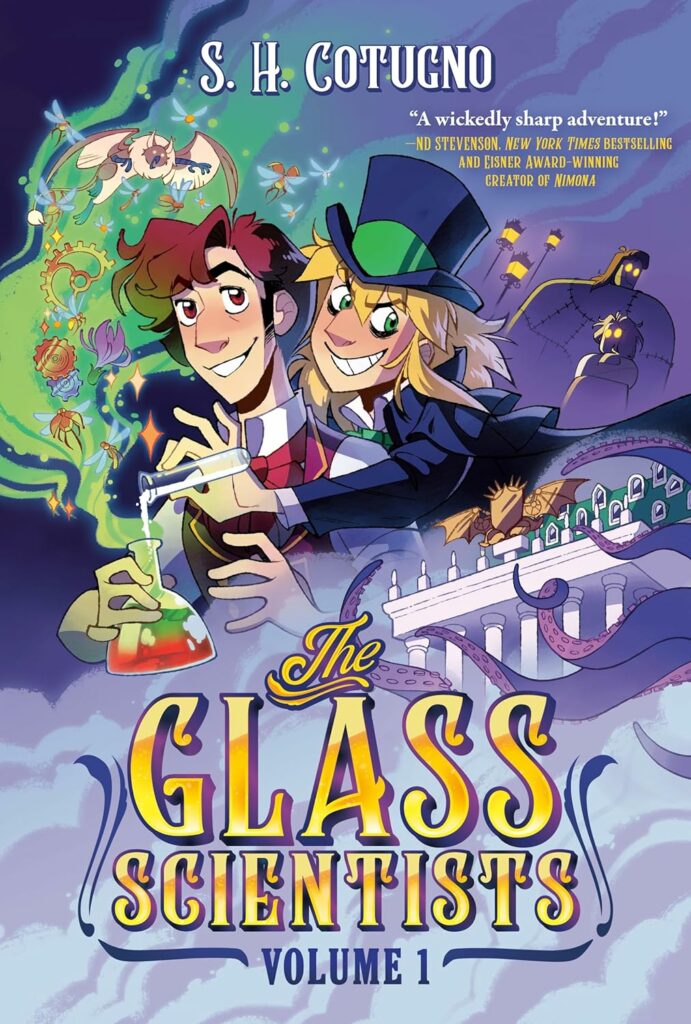
What advice might you have to give for other creatives, particularly aspiring comic book writers/artists?
Embrace your cringe! I was so afraid of looking cringe-worthy as a teenager that it makes me, well, cringe. I regret that I never had a phase where I bought all my clothes from Hot Topic and made rainbow wolf-sonas with spiky sidebangs who cried blood tears while listening to Linkin Park. I love that episode of Mortified where the guest reads her wildly anatomically-incorrect Harry Potter slash fanfiction. I would have learned so much from writing something ridiculous like that! Instead I wrote these very mature, carefully structured, distantly snarky songfics that never had satisfying endings because I was afraid to commit to anything.
Don’t avoid doing something you love out of fear that you’ll look back at yourself and cringe. You’re going to do that no matter what! But you’ll learn a lot more if you just do the thing you wanted to do in the first place.
Are there any other projects you are working on and at liberty to speak about?
I wish! Animation is such a slow process, especially if you’re trying to develop and pitch your own shows. I haven’t been able to talk about a project I’ve worked on in years!
But–and this may be cheating a bit–I have been creating new merch for The Glass Scientists pre-order campaign: enamel pins, bookplates, bookmarks, that sort of thing. Before starting TGS, I ran the Kickstarter for a prequel comic called Bleeding Heart and had to make all of the rewards for the campaign, as well as the book itself. It’s been fun to stretch that muscle again. The world of traditional publishing can be so big and overwhelming, so I’m glad to have a small but tangible part I can take on myself. Plus, I get to hand-package them for the fans who pre-order the book. I love being able to give that personal touch!
Finally, what LGBTQ+ books/authors would you recommend to the readers of Geeks OUT?
I just finished reading Molly Ostertag’s Darkest Night, a masterfully-crafted graphic novel about depression and childhood trauma in the traditional of magical realism. I had the honor of reading an early draft of the comic a while ago, and it’s been so inspiring watching it evolve and grow over time.
I’ve been excited to read Mari Costa’s Belle of the Ball ever since they first started posting sketches of the three main characters . . . I don’t even remember how long ago! Mari has a talent for crafting juicy queer relationships that will have you hooked after a single page.

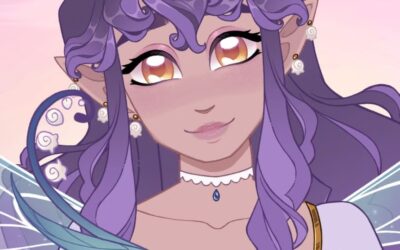
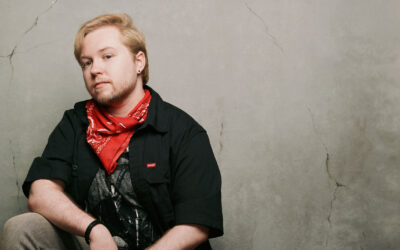
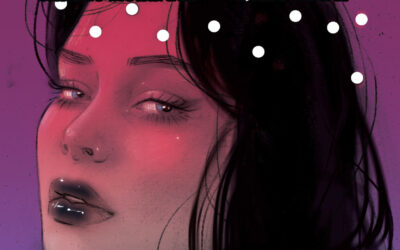
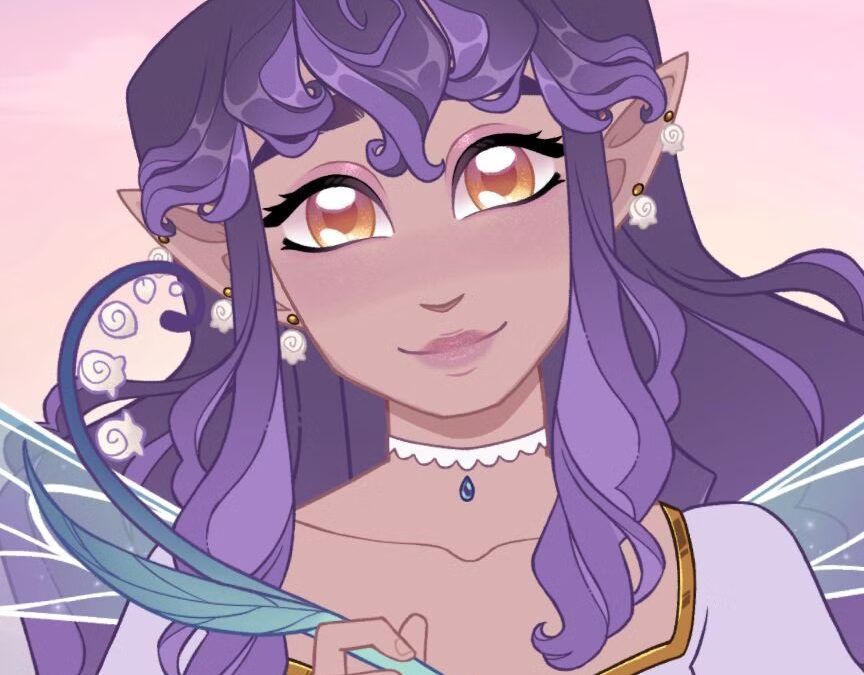
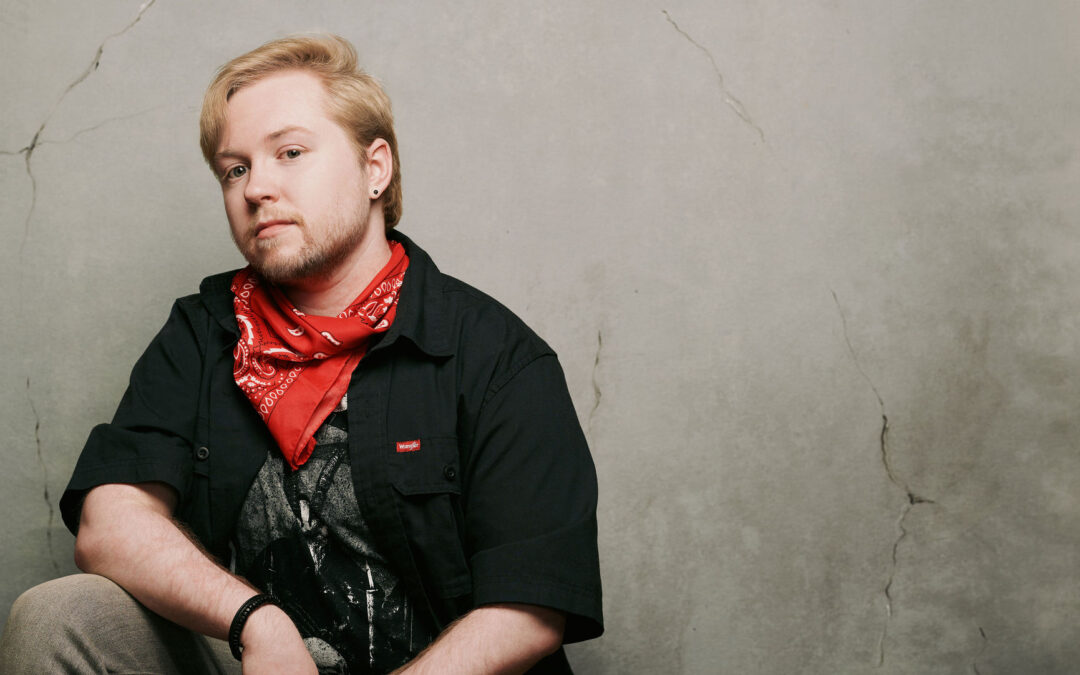
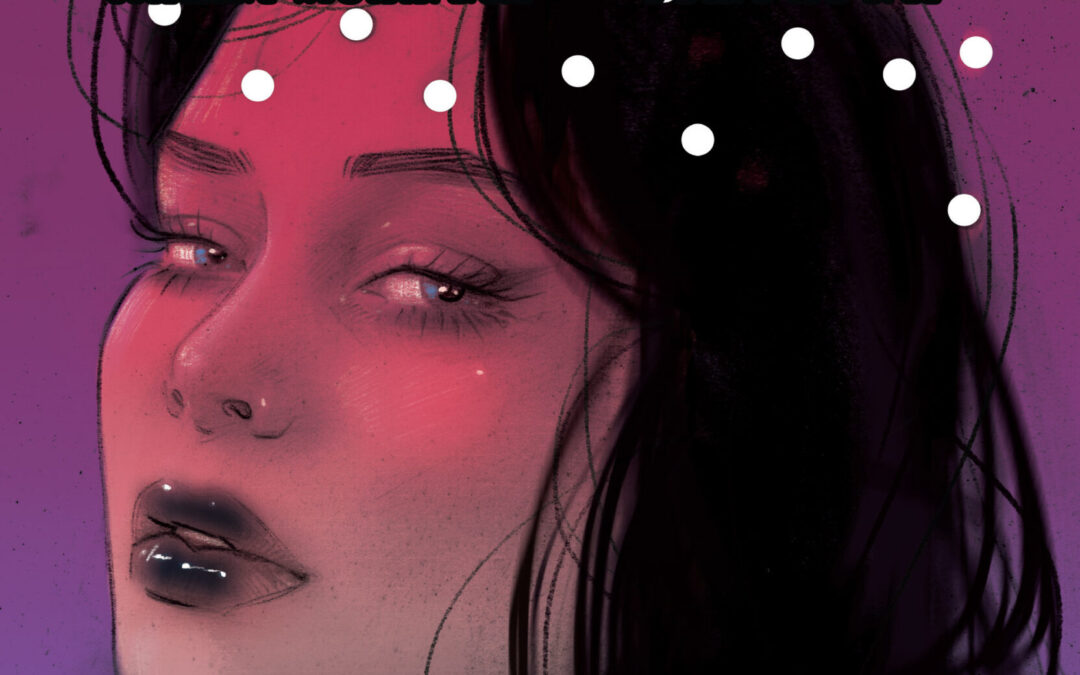
0 Comments